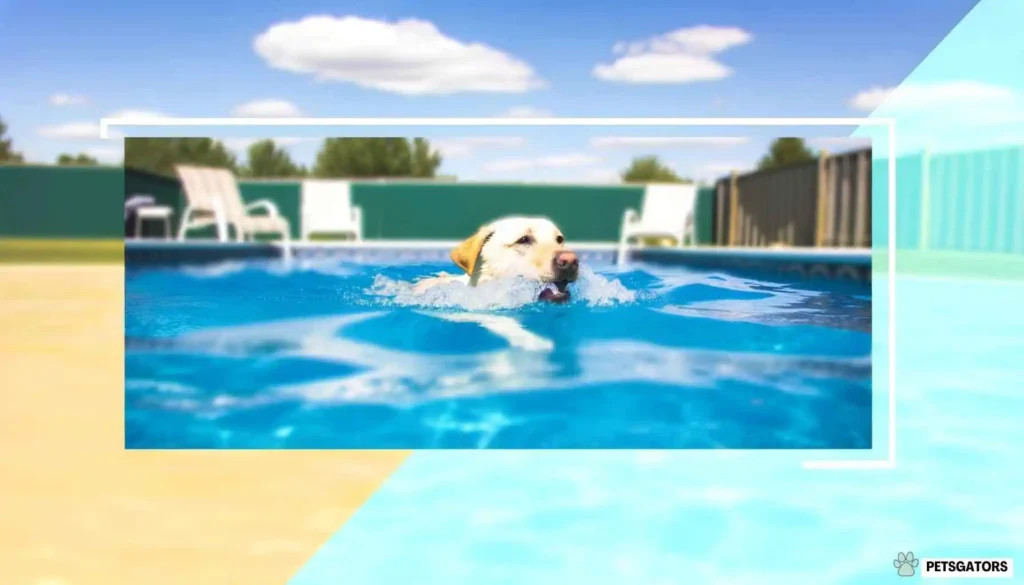Swimming Dog Syndrome
Today, we’re diving into a topic that’s crucial for any pet parent to understand – Swimming Dog Syndrome. This condition, often bewildering and distressing, affects our canine companions in various ways. In this post, we’ll explore what Swimming Dog Syndrome is, its causes, and how we can best care for our furry friends experiencing it.
Table of Contents
What is Swimming Dog Syndrome?
Swimming Dog Syndrome, also known as Swimmer Puppy Syndrome, is a developmental issue observed in young puppies. It’s characterized by a delay in the development of the hind legs, causing them to splay outwards, resembling a swimming motion.

Swimming Dog Syndrome
Causes of Swimming Dog Syndrome
- Genetic Predisposition: Some breeds are more susceptible due to genetic factors.
- Environmental Factors: Poor nutrition or slippery surfaces during early development.
Recognizing the Symptoms
Symptoms of Swimming Dog Syndrome include:
- Difficulty standing or walking.
- Hind legs splaying outwards.
- Underdeveloped muscles in the hind area.
Swimmer Puppy Syndrome at 2 Weeks
At just two weeks old, puppies with this syndrome may show signs like difficulty in crawling and a tendency to lie flat on their bellies.
Can Swimmer Puppy Be Cured?
Yes, many cases of Swimmer Puppy Syndrome can be effectively managed or cured, especially with early intervention.
Managing the Condition
- Physical Therapy: Gentle exercises to strengthen muscles.
- Proper Nutrition: Ensuring a balanced diet for healthy growth.
- Environmental Adjustments: Non-slip surfaces to aid in mobility.
For more details, check out this insightful article on Understanding Swimmer Puppy Syndrome.
Prevention and Longevity
- Regular Exercise: Helps in muscle development and strength.
- Monitoring Growth: Early detection of any abnormalities.
Swimmer’s Ear in Dogs
Not to be confused with Swimming Dog Syndrome, a swimmer’s ear is an ear infection common in dogs that frequently swim. Watch for symptoms like head shaking, ear odor, and scratching.

Swimming Dog Syndrome
Who’s at Risk?
Swimmer Puppy Syndrome is more common in certain breeds like dachshunds and bulldogs. However, any puppy, especially those in less-than-ideal breeding conditions, can be at risk.
Support and Care for Affected Dogs
- Veterinary Assistance: Regular check-ups and guidance.
- Community Support: Online forums and local pet groups.
For a fun and safe water experience with your dog, don’t miss our article on SWIMMING DOG GUIDE: TIPS FOR SAFE AND ENJOYABLE WATER FUN.
FAQs
How long can a dog with Swimming Dog Syndrome live?
With proper care, dogs with this condition can live a full, healthy life.
Is swimmer syndrome genetic?
Yes, genetics can play a role, but environmental factors are also crucial.
What is the fastest way to cure swimmer’s ear in dogs?
Consult a vet for appropriate medication and keep the ears dry.

Swimming Dog Syndrome
Conclusion
Swimming Dog Syndrome, while challenging, is not a life sentence. With the right care and attention, our canine friends can lead happy, active lives. Remember, early intervention is key. Stay observant, provide a nurturing environment, and don’t hesitate to seek professional advice. Your furry friend depends on you, and with your love and care, they can overcome the hurdles of this syndrome.







